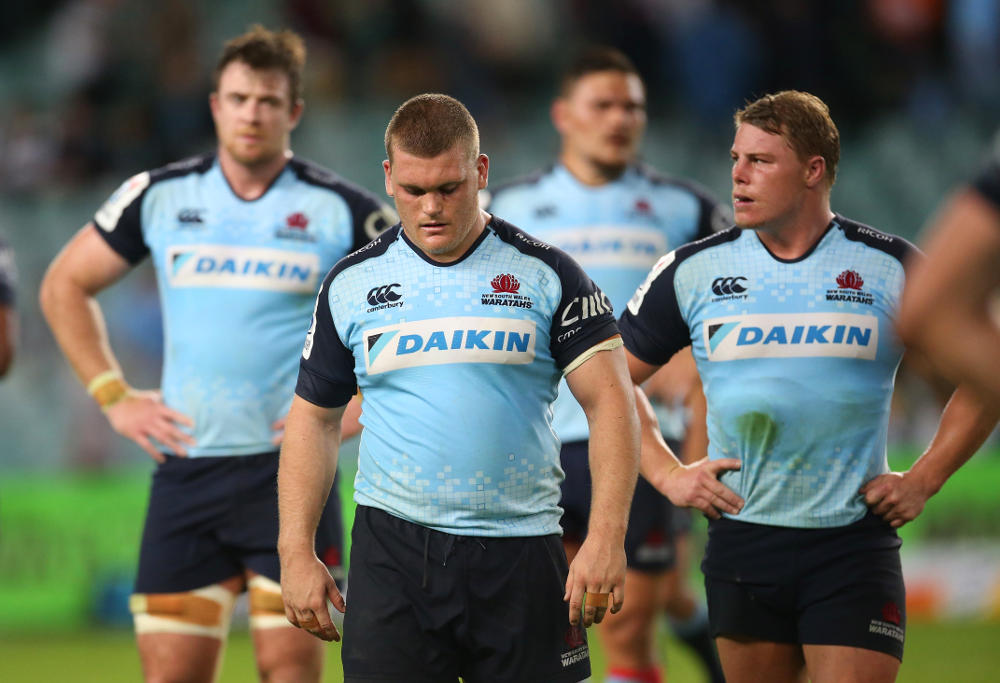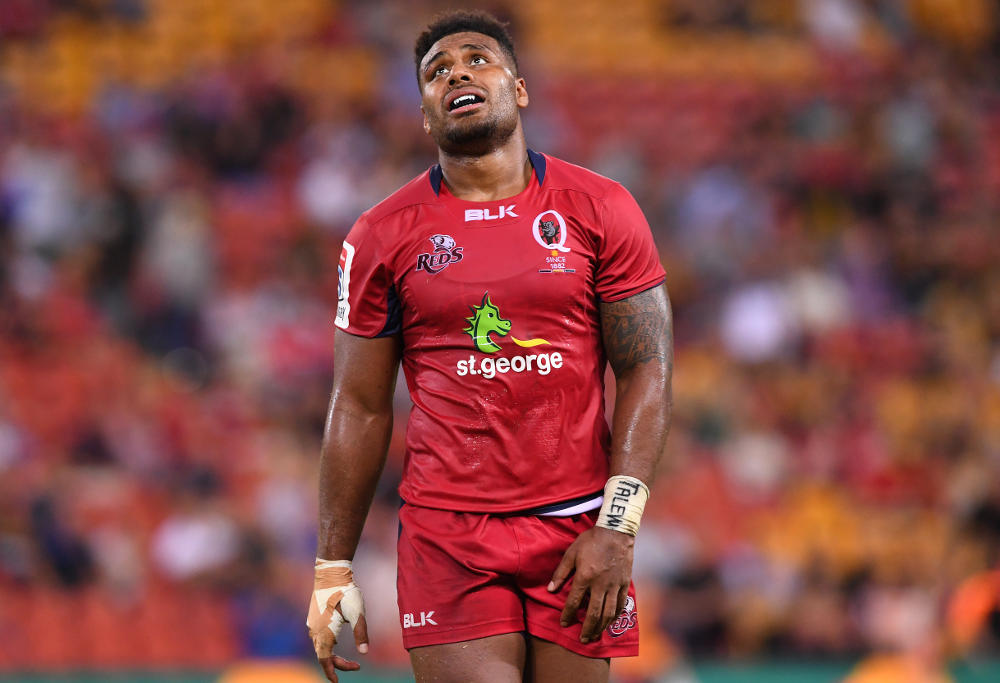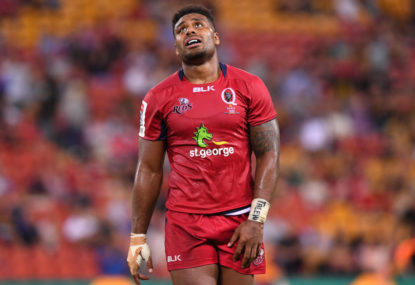The Australian Super Rugby teams are presently 0-22 against New Zealand sides during the 2017 rugby season. By the end of the season they could well be 0-25.
What has gone wrong with the Australian conference? Have Australian rugby players over the last decade or so become inferior to their Kiwi counterparts?
Possibly we have too many Super Rugby teams at present and the talent pool has been too thinly spread among the franchises. Maybe one franchise making way – the Force or the Rebels – will consolidate talent and the Aussie teams will become competitive again when playing against those from across the ditch.
1991 World Cup-winning Wallaby Tony Daly was contacted for comment, and the question was put to him about our player talent pool being too thinly spread.
Daly came up with a different reason.
“They’re going straight into the Waratahs from Australian schoolboys… they have no hardness, toughness from playing rugby against seasoned and experienced players.”

(Image: AAP Image/Craig Golding)
He also mentioned how, in his day, players would serve their apprenticeship in colts rugby or the lower grades and work their way up to first grade. Daly served an apprenticeship himself at Western Suburbs, now West Harbour, from 1985.
Playing under John Griffiths, Daly was taught the subtleties of scrummaging with and against experienced players, and he took that knowledge with him when he was plucked from club rugby, making a solid debut alongside fellow debutants Phil Kearns, a reserve grader at Randwick behind Eddie Jones at the time, and Tim Horan against the All Blacks during the 1989 season.
He would go on to form a World Cup-winning combination and arguably the greatest Australian front-row of all time with Kearns and Ewen McKenzie.
All three players served a club apprenticeship in Sydney playing with and against seasoned representative and international players in the Shute Shield before they made their mark on the international scene.
Before 1995 and full-time professionalism, all representative players cut their teeth in club rugby. The younger players prided themselves on being able to match the older players, and if they couldn’t, then they worked hard to close the gap in size, skill and strength until they matched and even surpassed them.
Nowadays these rugby ‘kids’ go straight from school to academy teams of the Super Rugby franchises, and where New Zealand has a national rugby championship in which their Super Rugby counterparts take part, Australia does not.
We do have our own National Rugby Championship, and three franchises aligned to Super Rugby teams – the Vikings, Brisbane and Melbourne Rising – use Super Rugby players. This is great for those NRC franchises, but it doesn’t make for a level competition, as other teams, including the North Harbour Rays and Greater Sydney Rams, have less access to Super Rugby players.
Coming back to club rugby, it appears there is no pathway at the moment for frustrated club players to go from club rugby to representative teams. If they have missed the boat from schoolboys, it appears they will then languish in clubland forever.
Imagine if Nick Farr-Jones and Phil Kearns were playing in the present era. Both played in the second XV at Newington College and neither matured until after they had well and truly left school.
Throw into the mix McKenzie, who, along with Kearns, formed two-thirds of the Randwick first grade colts team during the 1985 season before they progressed to open-age grade teams. Under today’s rules, all three of these World Cup winners would probably have missed out on higher honours under today’s structure.
There is definitely no way a player would be plucked for a Test match from club rugby these days like Kearns (Randwick reserves) and Daly (Gordon first grade) were in 1989. At the time, they had one senior representative match between them – Daly’s lone Sydney second XV appearance during the 1986 season – yet these guys were afforded faith and opportunity by then Wallabies coach Bob Dwyer.
They repaid the faith by being members of the World Cup-winning starting XV two years later.
To address the issue of local talent being left on the shelf, the Daily Telegraph says Club Rugby TV is set to announce a State of Origin-style match in which the best players from Sydney’s Shute Shield competition will go up against Brisbane’s premier club rugby competition.
Also in the works is an under-20s representative city versus country match between the best from Sydney Colts and footballers from the bush, thus ensuring those playing rugby at club level have a chance to shine on a bigger stage in front of a larger audience.

(AAP Image/Dave Hunt)
Only players and coaches without Super Rugby contracts will be selected for these matches. Who knows which players will shine and earn an opportunity to play at a higher level? Even some coaches may earn a second chance.
Daly coaches sub-district rugby these days and he’s been through the mill and back. Imagine what words of wisdom he could impart to these young fellows on both life and rugby if only given the chance?
Ten thousand brave souls at a Waratahs match doesn’t quite cut it, and there must be a better way for rugby to move forward in this day and age. Maybe going back to the future is the way forward for Australian rugby to rediscover its glory days.
As it stands, Australian rugby’s exclusive policy isn’t working, as our Super Rugby teams get knocked from pillar to post on the scoreboard.































































































